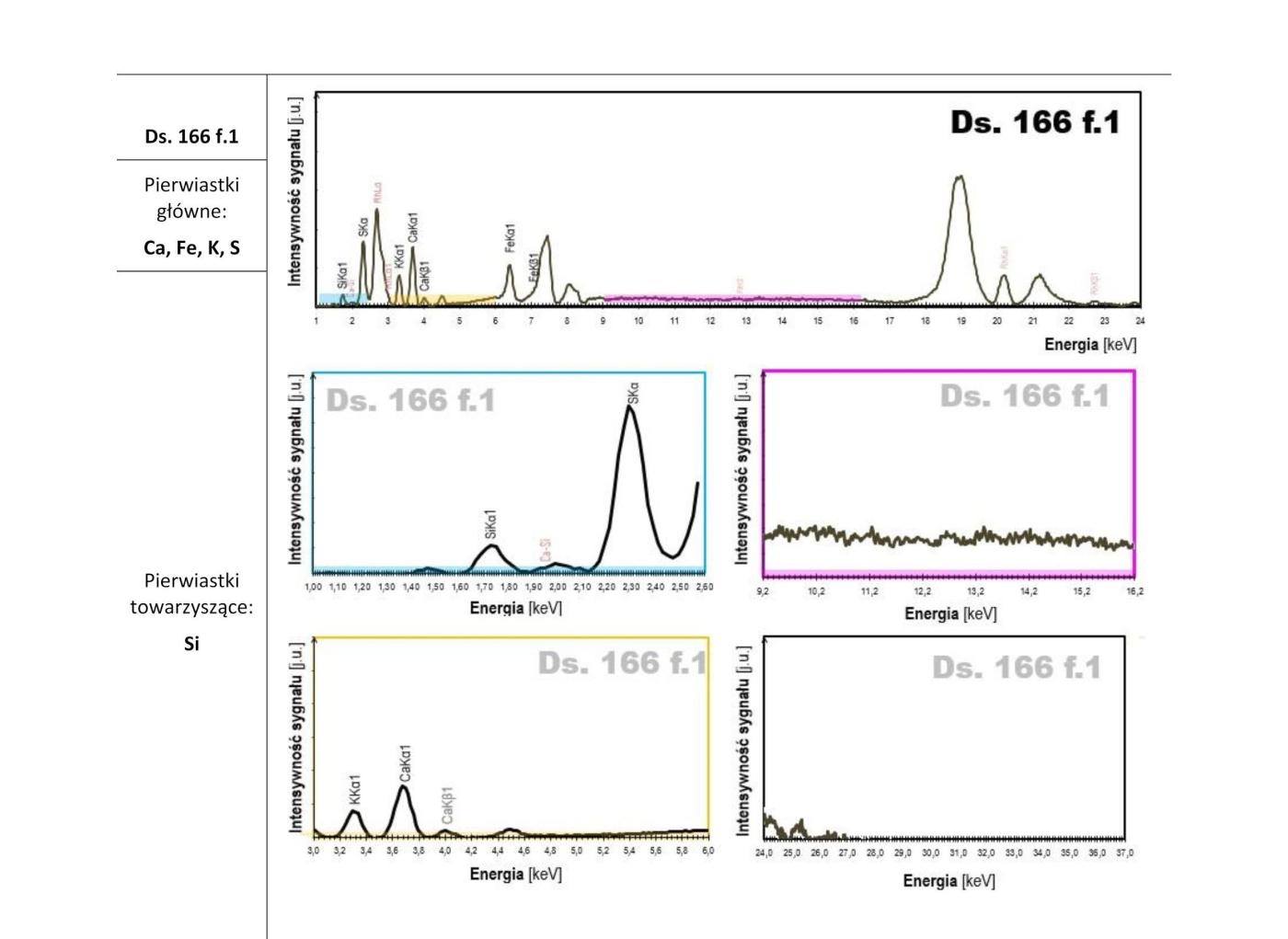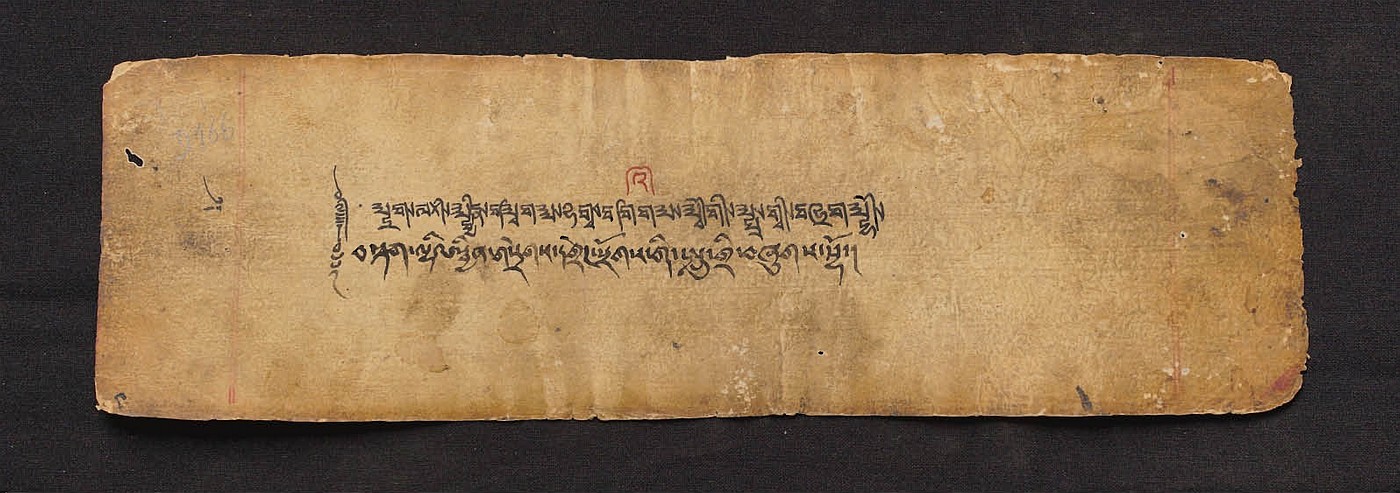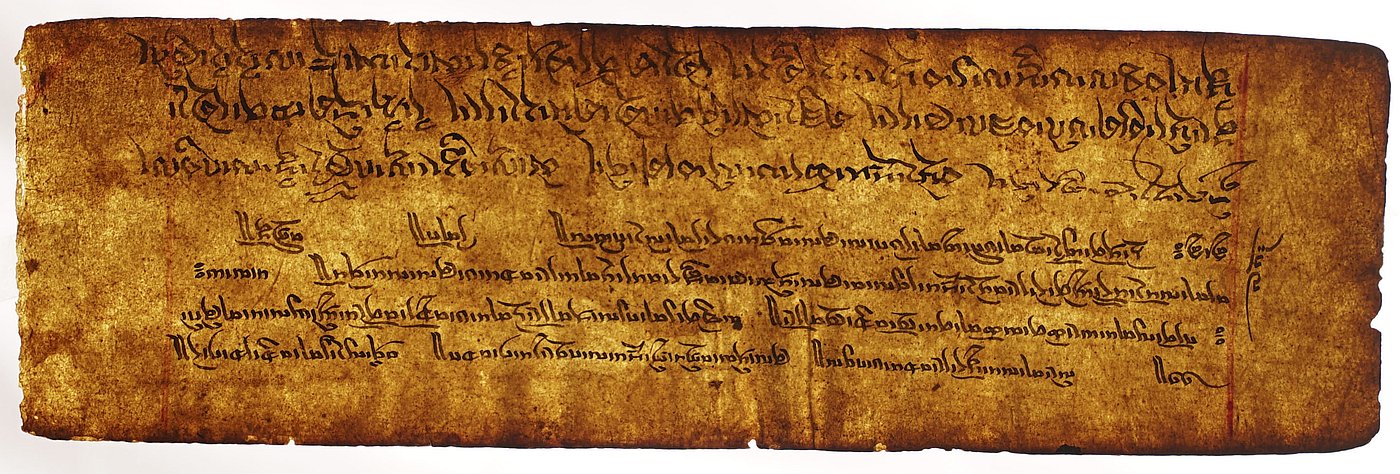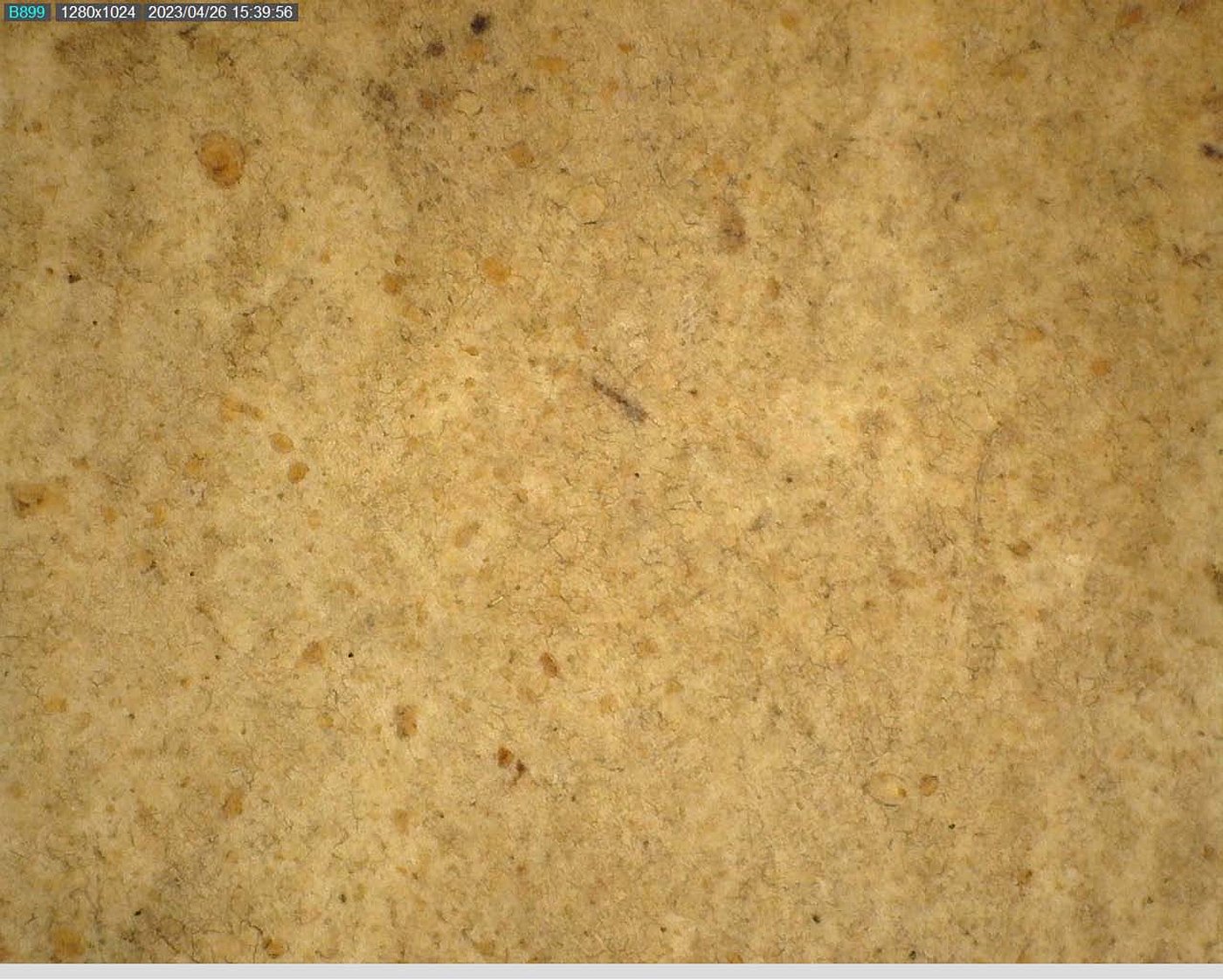DRANGSONG MANUSCRIPTS
| 1. Text number | Drangsong 166 |
| 2. Text title (where present) in Tibetan |
༄༅།།བསྟག[སྟག]ལྷའི་སྦྱིན་གསྲེགས[བསྲེགས]དགྲ་བགེགས་སྲོགས[སྲོག]གི་སྤུ་གྲི་བཞུགས་སྷོ། |
| 3. Text title (where present) in Wylie transliteration | bsTag[stag] lha’i sbyin gsregs[bsregs] dgra bsges srogs[srog] gi spu gri bzhugs s+ho/ |
| 4. A brief summary of the item’s contents | A fire offering ritual from the cycle of the meditational deity sTag la me ’bar, consisting of the two main stages of generation and completion. |
| 5. Number of folios. | 9 |
| 6. Scribe’s name | None |
| 7. Translation of title | A fire-offering ritual of sTag la [me ’bar], entitled “The Razor of the Obstructive Enemies” |
| 8. Transcription of colophon | tre ston phun tshogs grag[grags] pa’i phyag dpe’ la zhal bshus par dge legs ’phel lo/ dge’o/ bkra shis+ho/ |
| 9. Translation of colophon | This text was copied from collection of Tre ston Phun tshogs grags pa (15th cetury). May virtue and goodness flourish. Virtue. Blessings. |
| 10. General remarks | Tre ston phun tshogs grags pa, who lived in the 15th century, was a contemporary of the third sMan ri abbot Kun bzang rgyal mtshan (1424-1484). The Tre ston family originated in the Tre bo region of Tibet not far from Mustang (now in the township of Tre pa, (Ch.Zhe ba), sKyid rong (Ch. Jilong) County, Tibet Autonomous Region).
The family had many generations of scholars, interacting frequently with the neighboring Bon families, for example, sPa and Zhu, who were inheritors of the Bon tantra tradition at the time. The Tre family therefore occupies an important place in the history of Bon tantric lineages, such as the cycles of sTag la me ‘bar and Sitatapatra (gDugs dkar). The main temple of the Tre family has been relocated to Phoksundo, in Dolpo, Nepal, but there is still remains a very small hermitage in the Tre bo area of Tibet. |
| 11. Remarks on script | Small dpe tshugs, ’bru tshugs, Zhang zhung smar chung |
| 12. Format | Loose leaves |
| 13. Size | 8.5 × 27.2 cm |
| 14. Layout | |
| 15. Illustrations and decorations | |
| 16. Paper type | Woven, 2 layers, even fibre distribution, smooth |
| 17. Paper thickness | 0.14–0.17 mm |
| 18. Nos of folio sampled | f. 1 |
| 19. Fibre analysis | |
| 20. AMS 14C dating | |
| 21. XRF analysis | |
| 22. RTI | |
| 23. GCMS |



